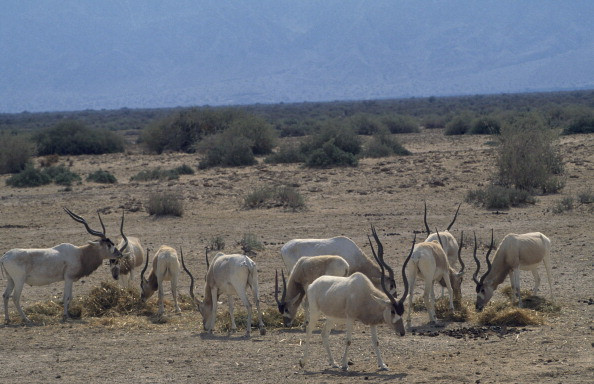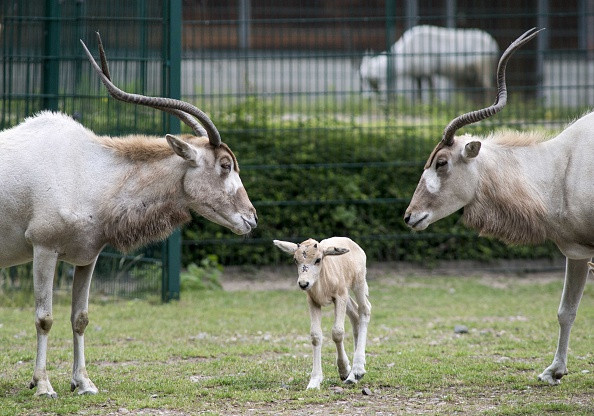Addax antelopes on brink of extinction with just three left in the wild

The Saharan Addax antelope may be facing imminent extinction, the International Union for the conservation of Nature (IUCN) has said. A survey carried out across the animal's habitat in March 2016 has identified only three remaining antelopes in the wild.
The Addax is a migratory antelope species native to the Sahara. Its most prominent characteristic is a "face mask" – a distinctive white patch running across the head. For thousands of years, it has thrived in desert landscapes where few other animals have survived.
However, the situation for the Addax has deteriorated at an alarming rate since 2010 when an initial round of surveys estimated the population at 200 animals.
Instability in the region, the construction of oil installations by the China National Petroleum Corporation, as well as increasing poaching have all contributed to driving an already rare animal to the brink of extinction.
The IUCN pointed out that since the Libyan uprising in 2011, the formerly remote habitats of the Addax have become major crossroads for the trafficking of wildlife, arms, drugs and migrants, disrupting the animals' homes. Military personnel sent to the area to protect the oil industry may also have engaged in illegal hunting of antelopes.

Urgent measures needed
To respond to this dire situation and protect the remaining wild Addax population, the IUCN says urgent steps must be undertaken.
"We are witnessing in real time the extinction of this iconic and once plentiful species – without immediate intervention, the Addax will lose its battle for survival in the face of illegal, uncontrolled poaching and the loss of its habitat," says Dr Jean-Christophe Vié, Deputy Director of IUCN Global Species Programme. "On behalf of all concerned parties we are recommending a set of emergency measures to help save the Addax from imminent extinction."

The IUCN and other conservation groups - the Sahara Conservation Fund, the NGO Noé, and the Convention on Migratory Species - believe the priorities lie in securing the remaining population of Addax. This can be done by taking more vigorous steps to stop poaching by soldiers and by engaging with the China National Petroleum Corporation to cooperate on prevent the extinction of the animal. Reinforcing the existing population will also be necessary, through the introduction of a captive-bred stock programme.
© Copyright IBTimes 2025. All rights reserved.






















